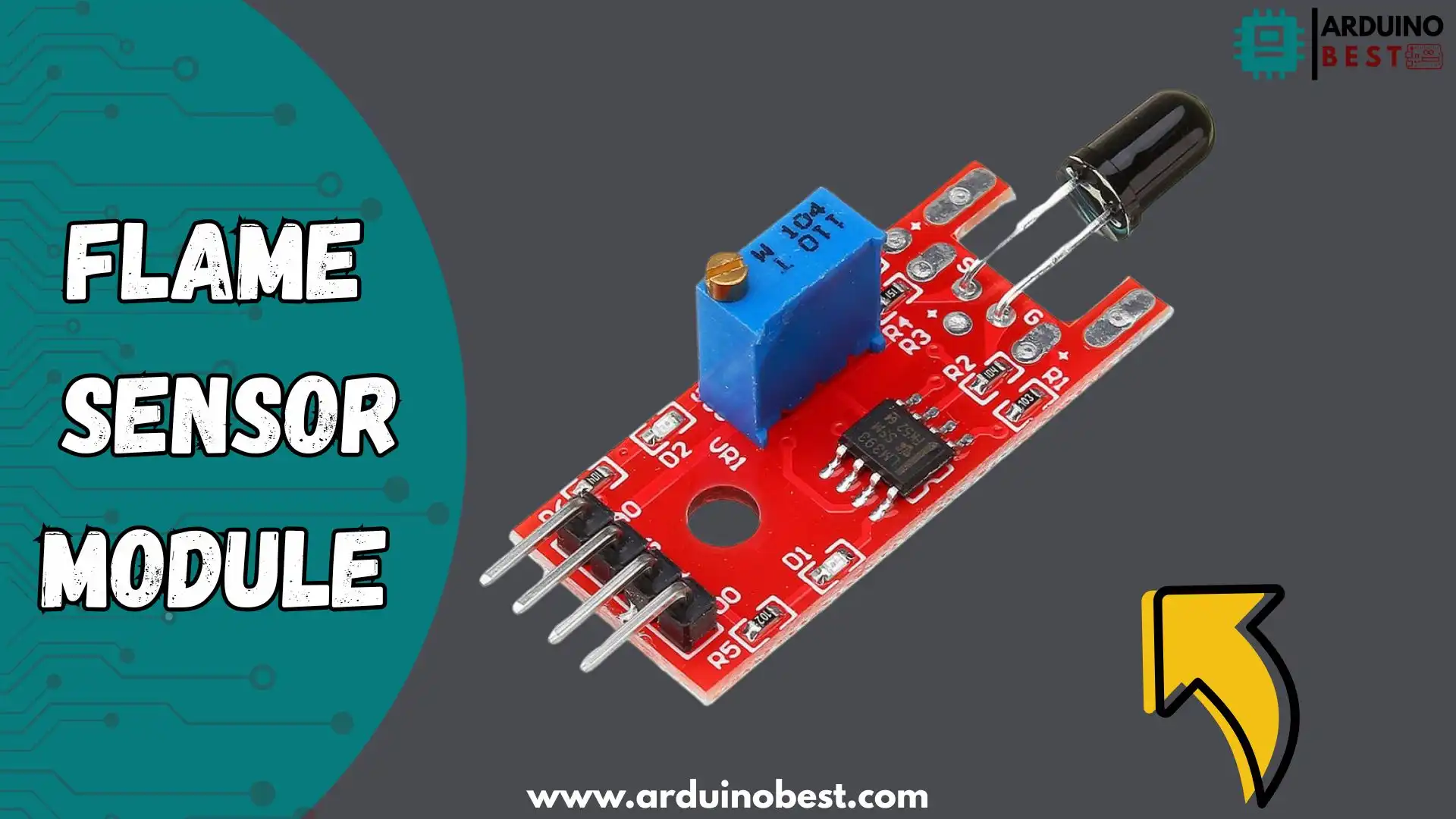Table of Contents
Flame sensor modules play a crucial role in modern technology, offering efficient detection of flames in various industries. Whether you’re developing a fire safety system, industrial automation, or consumer electronics, understanding the principles behind flame sensors can elevate your project. In this article, we will dive deep into the types, applications, features, and integration of flame sensor modules, with practical insights for developers and engineers alike.
What is a Flame Sensor Module?
A flame sensor module is an electronic component used to detect the presence of a flame or fire. These sensors are primarily used in safety systems, including fire alarms, industrial controls, and even in consumer appliances. They operate by detecting the light emitted by flames, typically using infrared (IR) or ultraviolet (UV) radiation.
These sensors are highly sensitive, allowing them to detect flames even from a considerable distance. They are used in both fire detection systems and combustion monitoring systems, enabling quick responses to the presence of flames.
Flame sensor modules have gained importance due to their reliability and accuracy in identifying potential fire hazards. For more detailed technical information on how flame sensors work, you can check out this article on flame sensor technology.
Types of Flame Sensor Modules
Flame sensors come in several types, each designed for different applications. Below are the most common types of flame sensor modules:
1. Infrared (IR) Flame Sensors
- Working Principle: These sensors detect infrared radiation emitted by flames.
- Applications: Commonly used in systems where flame detection over long distances is required.
- Advantages: High sensitivity to flame, even from a significant distance, and reliable in various environments.
2. Ultraviolet (UV) Flame Sensors
- Working Principle: UV flame sensors detect the ultraviolet radiation emitted by flames during combustion.
- Applications: Primarily used in industrial applications such as furnaces, boilers, and gas-powered equipment.
- Advantages: High-speed response time, ideal for detecting specific types of flames.
3. Ionization-Based Flame Sensors
- Working Principle: These sensors work by detecting the ionization of gases caused by the presence of a flame.
- Applications: Often used in gas-burning appliances like boilers and stoves.
- Advantages: Simple design and cost-effective.
4. Combination Sensors (IR + UV)
- Working Principle: These sensors combine both IR and UV technologies to increase sensitivity and minimize false alarms.
- Applications: Used in critical safety systems where flame detection must be precise.
- Advantages: Reliable and accurate, reducing the likelihood of false positives.
For a deeper understanding of the differences and applications of these types, refer to this guide on flame sensors.
Working Principle of Flame Sensor Modules
Flame sensor modules work by detecting the light emitted by flames, which can fall within the infrared or ultraviolet spectrum.
How IR Flame Sensors Work:
- Infrared radiation: A flame emits infrared radiation, which the IR sensors detect. The sensor then converts this radiation into an electrical signal.
- The sensor will output a signal when a flame is detected, which can be used to trigger a response, such as turning off gas valves or activating a fire alarm.
How UV Flame Sensors Work:
- Ultraviolet radiation: Flames also emit UV light. UV flame sensors detect these emissions, distinguishing them from other light sources.
- UV sensors are highly sensitive and can quickly detect a flame, which is crucial in environments where fast responses are necessary.
These sensors are often used in safety-critical systems such as gas furnaces, boilers, and other high-risk environments.
Applications of Flame Sensor Modules
Flame sensor modules have a wide range of applications, with some of the most notable being in fire safety, industrial systems, and consumer electronics.
1. Fire Safety Systems
- Fire Alarm Systems: Flame sensors are a core part of fire detection systems, helping to detect the presence of flames in homes, buildings, and industrial spaces.
- Automatic Fire Suppression Systems: In systems like sprinklers, flame sensors can automatically trigger water or fire retardants when a flame is detected.
2. Industrial Applications
- Boilers and Furnaces: In industrial environments, flame sensors are used to monitor boiler combustion, ensuring safe operation.
- Gas-Powered Equipment: They help detect combustion issues and prevent explosions by detecting flame-outs or fuel leaks.
3. Automotive and Aerospace
- Vehicle Engines: Used to monitor combustion in engines, ensuring efficiency and preventing hazardous situations.
- Aerospace: Flame sensors are integrated into safety systems of aircraft and other aerospace technologies.
4. Consumer Electronics
- Gas Appliances: Flame sensors are widely used in household appliances like gas stoves to ensure safe operation and avoid accidents.
5. Robotics and Automation
- Flame sensors are used in robots designed for firefighting, as well as in automated systems for detecting fire hazards in factories.
How to Integrate a Flame Sensor Module in Your Project
Integrating a flame sensor module into your project is relatively straightforward, especially if you’re using platforms like Arduino or Raspberry Pi. Here’s a basic outline of how to get started:
1. Wiring the Sensor
- Connect the sensor’s VCC to the 5V pin of your microcontroller.
- Connect the GND pin of the sensor to the GND of the microcontroller.
- Connect the OUT pin to one of the digital pins for reading the signal.
2. Programming the Microcontroller
- Write a simple program to read the sensor’s output.
- If the sensor detects a flame, the output will be HIGH; otherwise, it will be LOW.
Here’s an example of an Arduino code snippet to get you started:
cppCopyEditint flameSensorPin = 2; // Sensor pin
int flameDetected = 0; // Variable to store flame status
void setup() {
pinMode(flameSensorPin, INPUT);
Serial.begin(9600);
}
void loop() {
flameDetected = digitalRead(flameSensorPin);
if (flameDetected == HIGH) {
Serial.println("Flame detected!");
} else {
Serial.println("No flame detected.");
}
delay(1000); // Delay for 1 second
}
3. Troubleshooting
- Ensure the sensor is placed in an area where it can effectively detect a flame.
- Use proper shielding if environmental factors like sunlight or ambient light interfere with sensor accuracy.
For more details on how to integrate flame sensors with Arduino, refer to this step-by-step tutorial.
Common Challenges with Flame Sensor Modules
While flame sensors are useful, there are a few common challenges to be aware of:
- Environmental Interference: External light sources, smoke, or dust can cause false readings. To avoid this, ensure proper placement and calibration.
- False Alarms: Flame sensors might trigger false alarms due to extreme conditions, requiring fine-tuning for accurate detection.
- Limited Range: The range at which a flame sensor can detect flames varies based on the sensor type and model, and it might be too limited for some large-scale applications.
Flame Sensor Module Safety Considerations
When working with flame sensor modules, safety is paramount. Here are a few key considerations:
- Proper Calibration: Calibrate your sensor to ensure accurate flame detection, particularly in high-risk environments.
- Environmental Suitability: Ensure the sensor is rated for the environment it will be used in, especially when dealing with extreme temperatures or hazardous gases.
- Regular Maintenance: Regularly check the flame sensor to ensure it is functioning correctly, as wear or contamination can affect its performance.
FAQs about Flame Sensor Modules
1. What is the difference between IR and UV flame sensors?
- IR sensors detect heat emitted by flames, while UV sensors detect ultraviolet radiation. Both have distinct advantages depending on the application.
2. Can flame sensor modules detect all types of flames?
- Flame sensors are designed to detect specific types of flames (based on radiation). Some sensors might not detect certain types of flames if they emit radiation outside the sensor’s range.
3. How do I calibrate a flame sensor module?
- Calibration involves adjusting the sensor’s sensitivity to ensure it responds accurately in the intended environment. Follow the manufacturer’s guidelines for calibration.
4. What should I do if my flame sensor module is giving false alarms?
- Reposition the sensor to avoid interference from ambient light or smoke. Check for contamination or damage.
5. What is the typical range of a flame sensor module?
- The range varies depending on the type of sensor, but typical flame sensors can detect flames within a 5-15 meter range.
Conclusion
In conclusion, flame sensor modules are indispensable for modern safety, automation, and monitoring systems. Their ability to detect flames quickly and accurately makes them crucial in preventing accidents and protecting both people and property. By understanding how these sensors work, the various types available, and their specific applications, you can make informed decisions when incorporating them into your projects.
Whether you’re working on industrial systems, robotics, or consumer electronics, integrating a flame sensor module can greatly enhance the functionality and reliability of your design. As technology advances, the effectiveness of these sensors continues to improve, offering new opportunities for innovation in safety and automation solutions. With the right integration and application, flame sensor modules can play a pivotal role in creating more secure and efficient environments.
Arduino Projects:
1- Complete Guide for DHT11/DHT22 Humidity and Temperature Sensor With Arduino
2- DHT11 – Temperature and Humidity Sensor
3- DHT22 – Temperature and Humidity Sensor (more accurate than DHT11)
4- BMP180 – Barometric Pressure and Altitude Sensor
5- BMP280 – Barometric Pressure & Temperature Sensor
6- BME280 – Temperature, Humidity, and Pressure Sensor
7- Arduino Flex Sensor Controlled Robot Hand
8- Arduino ECG Heart Rate Monitor AD8232 Demo
9- Arduino NRF24L01 Wireless Joystick Robot Car
10- Arduino Force Sensor Anti-Theft Alarm System
11- Arduino NRF24L01 Transceiver Controlled Relay Light
12- Arduino Rotary Encoder Controlled LEDs: A Complete Guide

